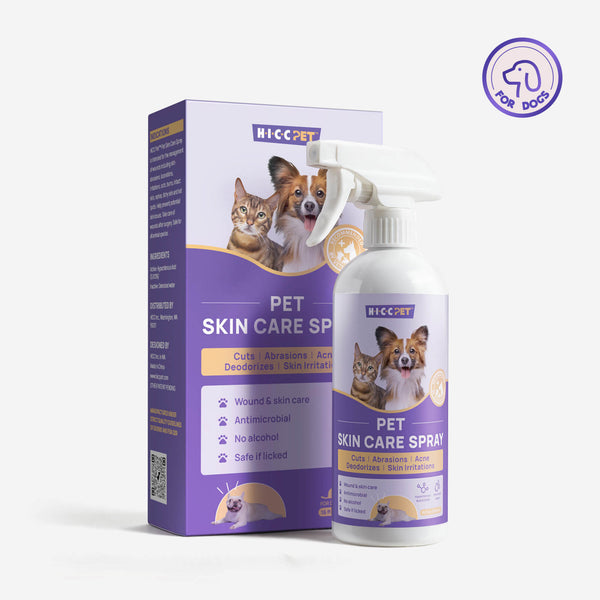Owning a cat is a wonderful experience, but it also comes with a set of responsibilities. As a beginner, it can be challenging to understand how to take care of your feline friend. There are many myths and misconceptions surrounding cat care, and we are here to clear them up for you. In this article, we will address some of the most common myths and facts about cats, including their grooming habits, need for care, and love for catnip. So, let's dive in and learn how to take care of your furry friend like a pro!
Myths and Facts About Cats
Fact: Cat’s Love Catnip
Why do cats love catnip? Cat owners have probably put a little bit of catnip on the floor and enjoyed seeing their cats rolling around in it. What is catnip actually? It is a fragrant herb nepeta cataria, known as catnip, catswort, or catmint. Native to Europe, the Middle East, and Central Asia, catnip contains feline attractant nepetalactone.
When cats are affected by catnip, they will start to rub on the herbs, releasing oil from the leaves. Catnip can stimulate playful responses from cats and boost activity levels. Chewing on catnip is non-addictive and safe. Catnip can also serve as a training aid, encouraging indoor cats to exercise.
Two-thirds of the cats will react to catnip, which is determined by genetic factors, so it is normal if your cat doesn’t react to catnip. Catnip can promote relaxation by engaging cats in play sessions. Cat owners may need to moderate catnip use if it leads to increased aggression of their feline.
Myth: Cats Don't Require Much Care
Cats are low-maintenance pets. Most of us have the first impression that cats are arrogant and not affectionate animals. Oh no, it is not true! Cats are sensitive to human emotion and their behavior are depending on how much attention their owner gives them. Cats are not typical of social animals and it can be challenging to take care of them.
For example, the old cats have difficulty when introduced to a new dog or cat to the family. They may feel defensive, chase, or even pick on other pets initially. You can start the desensitization process between the old and new pets by letting them slowly get used to each other. Start with using separate rooms for feeding and resting, then gradually exchange the bedding and blankets to let them adapt to each other’s scents.

Fact: Cats Groom Themselves
Cats do self-grooming themselves. Some of the people will have this wrong perception that cats can take care of their own hygiene. Well, it’s definitely not 100% correct. Let’s go over the tips on how to brush your cats to reduce shedding:
Rule # 1: Brush your cat when they are relaxed and in a good mood.
Rule # 2: To remove matted fur, brush against the hair growth direction. After removing the tangled fur, followed by brushing in the direction of hair growth.
Rule # 3 : Do not use the same brush for different cats at home to avoid if one has a contagious condition.
Rule # 4 : Suggested frequency of brushing for your cats
Long-haired cat: 1- 2 times daily
Short-haired cat: 1- 3 times weekly
Why do we need to brush our cats? It will stimulate sebaceous glands, a form of oil glands that keep their coat and skin healthier. For long-haired cats, it helps to prevent tangled or matted fur. In short, brushing is beneficial for the following reasons:
Eliminate dandruff
Inspecting for wounds and pests
Stimulate blood circulation
Below are some of the recommended brush types suitable for short-medium to long-coated cats that hate to be groomed.
Bristle brush - closely-space teeth to make your cat’s coat shine.
Slicker brush - comes with small steel pins to remove tangles and dander, suitable for medium-haired cats.
Matbreakers - long blades that remove matted fur without damaging the coating.

Myth: Don't Trim Cats' Claws
You shouldn’t declaw your cat just to stop them from unnecessary scratching. Declawing is cruel, barbaric, and inhumane and brings no medical benefits to cats. It is a process that involves the amputation of the last bone of each cat toe. If it is performed on a human being, it would be like cutting off each finger at the last knuckle. Alternatively, regular nail trimming will avoid serious damage on household items from scratching. In addition, keeping a scratching board near to our cat’s favorite spots and training them to do the scratching there can eliminate destructive scratching.
Kittens scratch as early as 8 weeks old. We need to understand the theory behind cat scratching behavior. Cats need to scratch to remove dead husks from their claws and to stretch their muscles.
How to trim a squirmy cat’s nails? Always do this when the cat is in a good mood. Sit them on their back and gently press on their footpad; claws will appear and the tips of the nails can be cut using a cat nail trimmer.
Cautions
Do it slow and relax. Reward your cat after nail trimming.
Cat nails can grow quite fast. Trim your cat’s nails as frequently as you trim your own nails.
Avoid trimming the lower part of the nail to avoid blood vessels.
Is It Necessary To Bathe A Cat?
Even indoor cats need to be bathed. Cats are fairly skilled at cleaning themselves but there may be times when a bath may be needed such as senior cats who can’t groom themselves, flea bathes, and when a cat is dirty beyond their ability to clean themselves.
Older cats especially need to be washed regularly as they may get dirtier and it can be more difficult for them to reach all areas that need cleaning. Overweight cats might also not be able to reach every part of their body for basic self-bathing. Saliva is not a substitute for soap and can’t kill all bacteria and germs. For a proper grooming and bathing experience for cats, you can follow these steps for the best results:
Step 1: Trim their toenails before the bath session. This is to avoid the cat injuring the owner if they display an aggressive defense reaction during their bath time (give at least a day between trims and bathes for decreased stress).
Step 2: Brush the cat before bathing to remove loose hair.
Step 3: Make sure you have the right water temperature (approx. 101-102 Fahrenheit to match their body temperature). For kittens, you may use a water basin to fill with water. For older cats, you may put a foldable bath towel or anti-slip bath mat in the bathtub to let them stand on it when bathing to avoid panic from the water.
Step 4: Bathe in proper order. Wet the limbs with water first, then squeeze an appropriate amount of body soap on your hands to bathe them, follow the order from the neck-back- belly limbs, and tail. Ensure the water level is always lower than their back.
Step 5: Dry and rinse your cat with a towel. For long-haired cats, you may use hair dryer on the coolest setting to dry the fur thoroughly.
Another tip is to use grooming wipes on your cat to get rid of excess dirt and improve their coat and skin.
Skin Problems And Allergies Among Cats
Infections - Some cats are prone to fungus, parasites, and viruses which can be easily transmitted to other pets within the same house, leading to itching, scratching, redness, and swelling.
Food Allergies - Pay attention to the amount of protein intake in your cat’s food. In addition, cats have lactose intolerance and should not be given cow’s milk.
Environmental Allergies - External elements such as dust, mold, or cigarettes may cause other skin problems such as hair loss, dry skin, acne, and unpleasant odor.
Genetic Factor - Some cats are born with sensitive skin or a predisposition for skin conditions. In addition, some diseases — such as certain cancers and the adrenal disorder called Cushing's — may lead to skin problems in dogs and cats.
How To Treat A Cat’s Skin Problems?
Use antibacterial skin spray or hypoallergenic pet shampoo for cat
Wipe off cat’s paws after trips outdoors
Make sure your cat’s food is rich in omega-3 and omega-6 fatty acids
For fungal infection, opt for an antifungal, anti-itch medication
Stay up to date on preventative flea and tick medication
Please note that the information provided in this article is for educational and informational purposes only. We are not veterinarians, and the content shared here should not be considered professional veterinary advice.
If you have any questions regarding copyrights or the use of materials in this article, please contact us for clarification.







Thanks for your interaction and support.